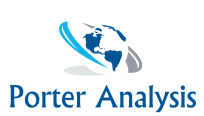UTC- United Technologies Corporation is America’s one of the biggest multinational conglomerate. It’s headquartered in Connecticut. The company is involved in manufacturing, researching, and developing the products in various areas like aircraft engines, HVAC, escalators, elevators, building system, security, industrial products and Aerospace systems. UTC is one of the largest military contractors and get about 10% of the revenue from government of US. The company believes in continuous innovation and provides the good quality products. The company changes its performance methods and strategies time to time according to the changes and responds quickly in order to be up to date in industry (UTC, 2019).
The company is operating at such high level and responds quickly to the market demands and changes. It is necessary for the company to analyze its strategical position in the industry, and the competition level, which can be easily found by using Porter five forces model. The model will help in analyzing and determining the business position and competitive strengths of the company. here is the detailed Porter five forces analysis of United Technologies;
Bargaining Power of Buyers
UTC is facing unfavorable position in this sector because of the US government as a buyer. This increases the price sensitivity and US government has major control over the prices. If UTC will increase the price, the government agencies or the contractors will switch them and thus, it will affect the profitability of the company. However, the quality and the technological advancements give the edge to UTC to increase the prices. The other buyers of UTC also purchase in bulk which increase the negotiation power of them (Diab, 2003).
Bargaining Power of Suppliers
The bargaining power of suppliers is high due to the raw materials required in the manufacturing of such innovative products. When suppliers get to know their importance, they increase their negotiation power. However, UTC balance this by achieving the economies of scale to such extent. It is necessary for UTC to maintain good relations with suppliers in order to not get negative affect on their financial performances (CSUS, 2009).
Threats of New Entrants
The risk from the new entrants are very limited for the United Technologies. The company usually define this threat as, rivals not currently competing but have the potential to do so, and they try to increase the entry barriers form increasing the competitors. United Technologies is in favorable condition as the high cost of operation in the building system and aerospace industries becomes the barrier for new entrants. UTC also enjoys the favorable competitive edge because of the utilization of broad array off the technologies implemented in the production of differentiated products. Moreover, achieving the economies of scale is very important in this industry, and new entrants will find it a difficult task (Shahroodi, 2015).
Threats from the Substitute Products
There are low threats from the substitute products because of the great quality of UTC, and innovative products, which cannot be beaten by rivals too quickly. UTC has advantage over its usage of advance technologies, which makes it stand out among competitors. So, finding substitute up to that quality is too difficult for the consumers, thus, this makes United Technologies different from competitors one. (CSUS, 2009).
Rivalry of Existing Players
There are few parallel competitive situations for UTC from the rivals which makes this force medium to high. The UTC’s business of aerospace is facing substantial competition from foreign, domestic and few other companies which has the approval of manufacturing the spare parts. The aerospace, space and global defense industries are also becoming consolidated by few big companies. This trend increases the competition among few players in market. thus, affecting the financial position of the UTC in long run. However, it is expected that in coming years, the demand for airline and global aircrafts will increase which will provide the greater scope to companies for competition (Shahroodi, 2019).
References
Diab, D. 2003. United technologies corporation corporate strategy. [Online], Available at: http://www.angelfire.com/indie/dannydiab/utc.htm, [Accessed on: 21st November, 2019].
CSUS, 2009. Competitive position of major aerospace companies. [Online], Available at: https://www.csus.edu/indiv/h/hattonl/documents/aerospace.doc, [Accessed on: 21st November, 2019].
Shahroodi, A. 2014. LDR 6140 Second Case Study Analysis–United Technologies. [Online], Available at: https://www.slideshare.net/ArdavanShahroodi/ldr-6140-second-case-study-analysisunited-technologies, [Accessed on: 21st November, 2019].
UTC, 2019. Our Company. [Online], Available at: https://www.utc.com/en/Our-Company/key-facts, [Accessed on: 21st November, 2019].
